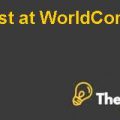Framingham State University Business Policy and Strategy Course MGMT 485 Fall 2016 Case Study Solution
Section-I:Case: The Timken Company: Market Entry into Romania (A)
Please discuss some of the features of the global ball and roller bearings industry. Then conduct an analysis of this industry using Porter’s Five Forces Model. Finally, as you reflect, share a perspective about this industry. (You can discuss the Five Forces Model without drawing it.(20 points)
Industry Features
After analyzing the case and evaluating the Bearing and rolling industry, it can be determined that the global market for ball and roller bearing amounted to $25 million in the late 1997. Where, the United States was considered to the largest market, securing a market share of around 23%. Furthermore, Japan secured 18% of the share in the market and Germany only amounted to 11% of the market share. Additionally, these countries were considered the largest bearing producers in the world around that time. However, North America was known for its high demands in the industry, which could be attributed to the reason that, the North American Region steel component consumption rate was higher than compared to other regions, where Western Europe followed in North America’s footsteps. Moreover, the industry’s annual growth rate average at 5% annually. Exhibiting markets potential for new entrants and existing one already operating in it.
Porter Five Forces Model
Porter’s five forces model has been performed to evaluate the competition in the market, the bargaining power of buyers and suppliers, as well as the threats of new entrants, threats of substitutes so that, Timken would be able to minimize the risk and make effective decision regarding the proposed venture in Romania.
Competitive Rivalry
The Competitive rivalry in the Romanian market was high, as the Romanian market was considered as one of the most dynamic and emerging market of Europe. Furthermore, after Poland, Romania was the second biggest market in Europe, which, in turn, was one of the causes of increasing the competitive in the market as more and more industries joined the niche market to increase their economies of scale. Moreover, due to the entrance of new organizations in the market and enhancement in their innovative capacity, it led to the decrease in the share of the industries available in the market. Hence, this situation compelled the company to increase their spending on their research and development project to gain a competitive advantage over the competitors, which, in turn, raised the level of competition in the market, taking it to a whole new level, which compelled the industries to increase their innovative capacity while decreasing the cost structure to enable themselves to enhance their profit margins.
However, Timken could minimize its competitive pressure by developing strategies of growth, which would enhance its competitive advantage and increase its share in the market. Furthermore, it could differentiate its product from that available in the market so that, it would increase its brand image which could enable its customers to prefer its product over the ones offered by the competitor in the market, which, in turn, would help the company to increase or maintain its share in the market and increase its economies of scale.
Bargaining power of Buyers
The bargaining power was high, as the buyers in the market have low income as compared to other European markets. Hence, the buyers held the power to drive prices lower, which could affect the companies trying to enter into the market. Furthermore, it was assessed that, the customers were sensitive to cost and the differences in services provided. Moreover, the buyers’ power affected the industry, in which they would be able to negotiate on the level of services provided by different industries available in the market. Additionally, it can be determined that Timken appealed to those manufacturers or industries that used or consume steel component and bearing product to product their finished good. Hence, the already established manufacturers and steel producers had already outsourced their steel component manufacture and bearing function to their trusted vendors established and operating in the market. Therefore, it would be difficult for the company to establish itself as a reliable substitute for those vendors. Similarly, trust need to be earned in the market. however, it can be evaluated that Timken’s brand image and recognition in other European, North American and African market might enable it to create that level of trust easily with the organization already established in the market.
Bargaining Power of Supplier
The Bargaining powers of suppliers was low, as after the collapse of Soviet bloc the Romanian market was left with an obsolete industry. Hence, the already established suppliers did not have much of a choice, other than sell their product in to the local market which enabled the established manufacturers to drive prices lower. However, this would compel the suppliers to decrease their cost of production, which could decrease the quality of their supplies. Therefore, if Timken wants to maintain its high quality, then it needs to ensure that the local supplier quality meets the quality standards set by the company. Nonetheless, if Timber determines that the quality of the local suppliers does not meet its quality standards, then it needs to develop strategies or processes to produce the supplies in-house or import the supplies from some other supplier overseas............
This is just a sample partial case solution. Please place the order on the website to order your own originally done case solution













